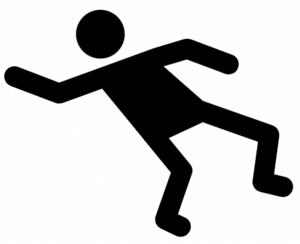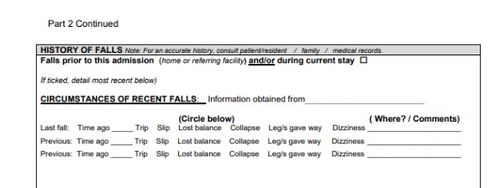An Unbiased View of Dementia Fall Risk
An Unbiased View of Dementia Fall Risk
Blog Article
Dementia Fall Risk Fundamentals Explained
Table of ContentsWhat Does Dementia Fall Risk Do?The Dementia Fall Risk PDFsHow Dementia Fall Risk can Save You Time, Stress, and Money.More About Dementia Fall RiskThe Main Principles Of Dementia Fall Risk
The FRAT has three sections: drop threat standing, danger variable list, and action plan. An Autumn Danger Condition includes information about history of current drops, medicines, emotional and cognitive status of the client - Dementia Fall Risk.If the individual ratings on a threat element, the corresponding number of factors are counted to the client's loss risk rating in package to the much appropriate. If a client's loss risk rating totals 5 or higher, the individual is at high danger for drops. If the patient scores only four factors or lower, they are still at some danger of dropping, and the nurse needs to utilize their ideal professional analysis to take care of all autumn risk variables as part of an alternative care strategy.
These conventional approaches, in basic, aid establish a risk-free atmosphere that reduces accidental falls and marks core preventive actions for all individuals. Signs are crucial for individuals at danger for drops.
Some Known Factual Statements About Dementia Fall Risk
Wristbands ought to include the client's last and first name, date of birth, and NHS number in the UK. Only red color needs to be made use of to signify unique individual condition.
Products that are also much may call for the patient to connect or ambulate unnecessarily and can possibly be a risk or add to falls. Assists avoid the client from heading out of bed with no support. Registered nurses react to fallers' call lights more quickly than they do to lights launched by non-fallers.
Visual disability can significantly trigger drops. Hip pads, when used correctly, may reduce a hip crack when fall occurs. Maintaining the beds closer to the floor reduces the risk of falls and severe injury. Placing the mattress on the flooring substantially reduces loss danger in some health care settings. Reduced beds are developed to decrease the range an individual drops after moving out of bed.
Our Dementia Fall Risk Ideas
Patients who are high and with weak leg muscle mass that try to rest on the bed from a standing setting are most likely to drop onto the bed due to the fact that it's too low for them to reduce themselves securely. Also, if a high person attempts to rise from a reduced bed without assistance, the client is most likely to fall back down onto the bed or miss out on the bed and fall onto the floor.
They're designed to advertise timely rescue, not to avoid falls from bed. Audible alarm systems can also advise the person not to get up alone. The usage of alarms can also be an alternative to physical restraints. Besides bed alarm systems, boosted supervision for high-risk individuals additionally might help prevent falls.

Patients with an evasion stride rise autumn chances dramatically. To reduce autumn risk, footwear ought to be with a little to no heel, slim soles with slip-resistant tread, and sustain the ankle joints. Encourage patient to use nonskid socks to stop the feet from gliding upon standing. However, motivate clients to put on ideal, well-fitting shoesnot nonskid socks for ambulation.
The 2-Minute Rule for Dementia Fall Risk
Clients, specifically older adults, have actually reduced visual ability. Lights an unfamiliar environment helps boost exposure if the patient need to stand up during the night. In a research study, homes with adequate illumination report less drops (Ramulu et al., 2021). Renovation in lighting in your home might lower fall rates in older adults (Dementia Fall Risk). The use of gait belts by all wellness treatment providers can advertise safety and security when aiding patients with transfers from bed to chair.

Caretakers work for guaranteeing a protected, safeguarded, and safe atmosphere. Researches demonstrated extremely low-certainty evidence that caretakers reduce fall threat in intense care health centers and only moderate-certainty that options like video monitoring can decrease caretaker use without raising fall danger, recommending that caretakers are not as beneficial as initially thought (Greely et al., 2020).
The Best Strategy To Use For Dementia Fall Risk

Raised physical conditioning lowers the risk for drops and limits injury that is endured when loss transpires. Land and water-based exercise programs might be in a similar way advantageous on balance and stride and consequently decrease the threat for falls. Water exercise might contribute a favorable benefit on equilibrium and gait for ladies 65 years and older.
Chair Surge Workout is a straightforward sit-to-stand workout that assists strengthen the muscle mass in the thighs and butts and boosts mobility and self-reliance. The goal is to do Chair Rise exercises without making use of hands as their explanation the customer comes to be stronger. See resources section for a detailed direction on exactly how to do Chair Rise exercise.
Report this page